2030 targets aligned to 1.5°C: evidence from the latest global pathways
Authors
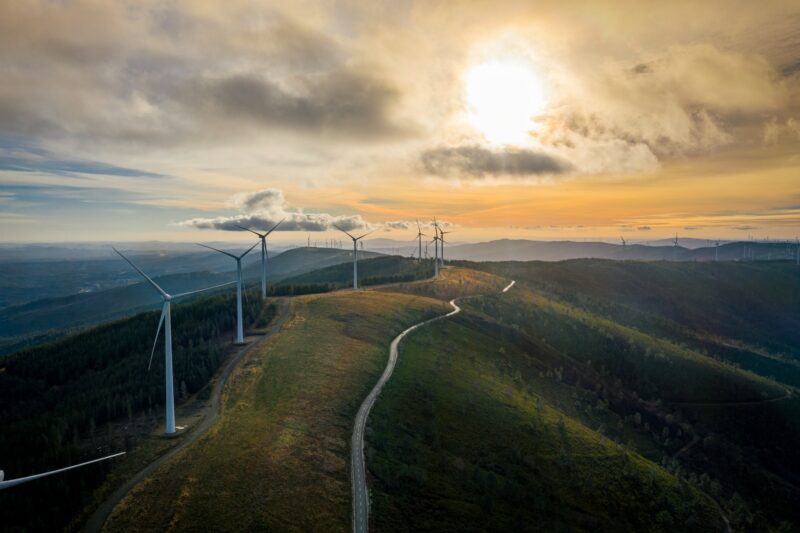
How and why we distilled these targets
The IPCC’s sixth assessment report (AR6) provides crucial information on how to tackle climate change, in particular identifying pathways that limit warming to 1.5°C with no or limited overshoot. However, many of the pathways in the AR6 database are not fully Paris Agreement compatible in that they do not bring emissions to net zero in the second half of this century. Many also rely on unsustainable levels of carbon dioxide removal and/or do not factor in recent progress, such as the declining cost of renewables.
In this briefing, we extract 24 pathways from the IPCC AR6 database that can guide the global energy transition to net zero in a sustainable way. These Paris-compatible pathways show what’s needed to limit warming to 1.5°C if we don’t bet on likely unfeasible levels of future carbon dioxide removal. From these we set robust 1.5°C-aligned 2030 targets, including for renewable rollout and fossil fuel decline.
Our five key 2030 global targets aligned to 1.5°C
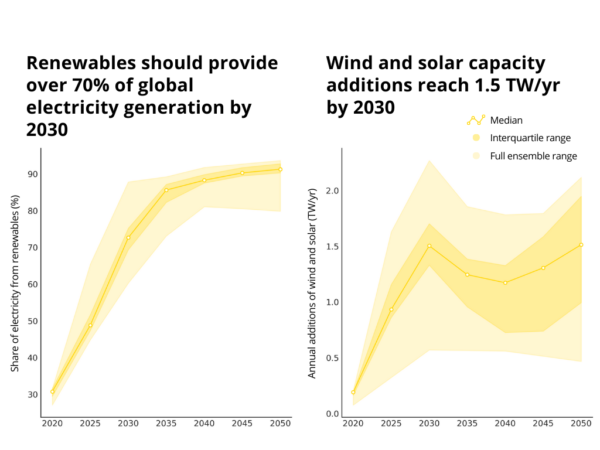
1. Install at least 1.5 TW of new wind and solar capacity per year by 2030 – that’s a five-fold increase from 2022 levels of 0.3 TW/yr.
Total wind and solar capacity should reach around 10 TW by the end of the decade, five times the 2 TW of capacity in 2022. This target is achievable if the recent acceleration in capacity additions is maintained. It should be seen as a floor – if electricity demand grows as quickly as in the IEA’s Net Zero Emissions scenario, then solar and wind installations would need to be closer to 2 TW/yr by 2030.
2. Set a global renewables target of at least 70% of electricity generation by 2030, more than doubling today’s share of around 30%.
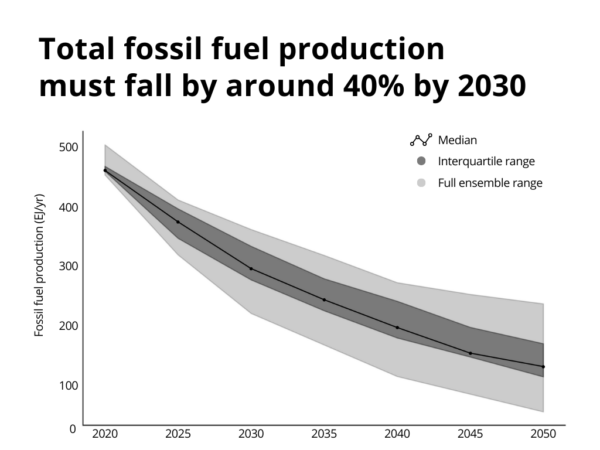
3. Cut global fossil fuel production by 6% each year from 2022 onwards to reduce fossil fuel use by around 40% over the decade.
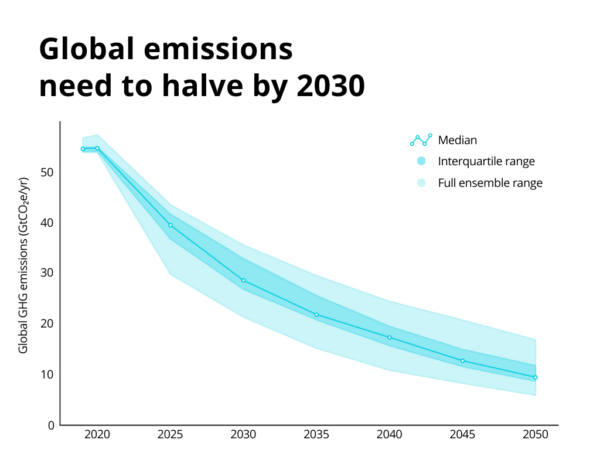
4. Cut global GHG emissions in half (by 48%) by 2030 compared to 2019.
This is faster than the 43% reduction highlighted by the IPCC and is necessary to significantly reduce dependence on carbon dioxide removal. This means reducing emissions by 8% per year (2021-2030).
5. Cut methane emissions in the energy sector by 66% by 2030.
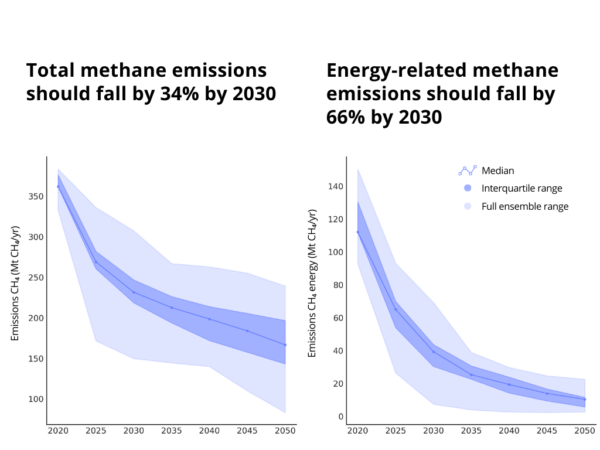
Methane emissions in the energy sector need to fall around twice as fast as total methane emissions, which drop by 34% over the decade. The 30% cut in the Global Methane Pledge is not aligned with 1.5°C pathways.
*This publication was updated on 22/08/23 (p. 20: 2.7 GtCO2/yr of BECCS by 2050 was corrected to 3.6 Gt CO2/y)
This publication was updated on 29/08/23 (graphs adjusted to acknowledge that they portray the full ensemble range)











